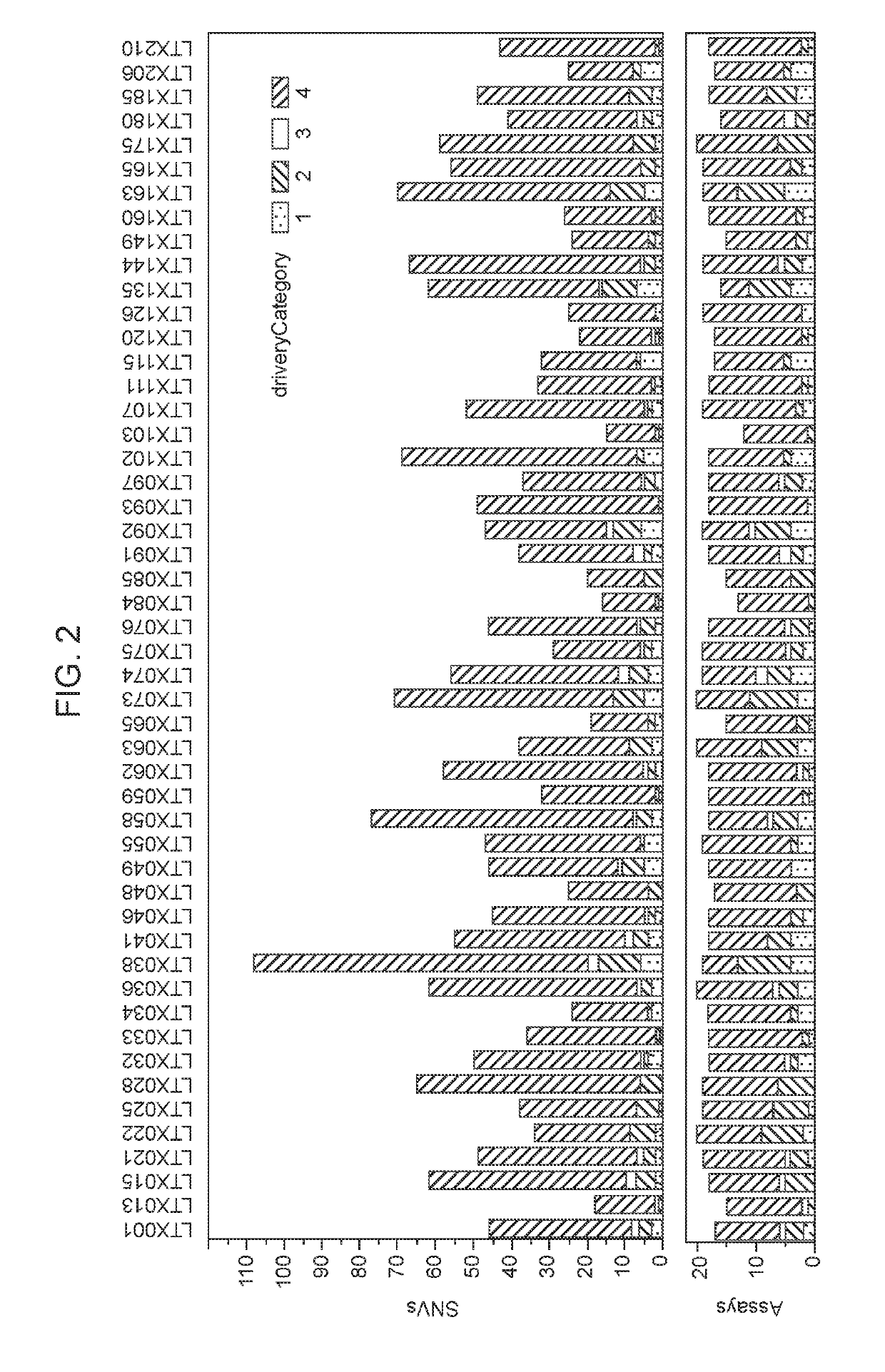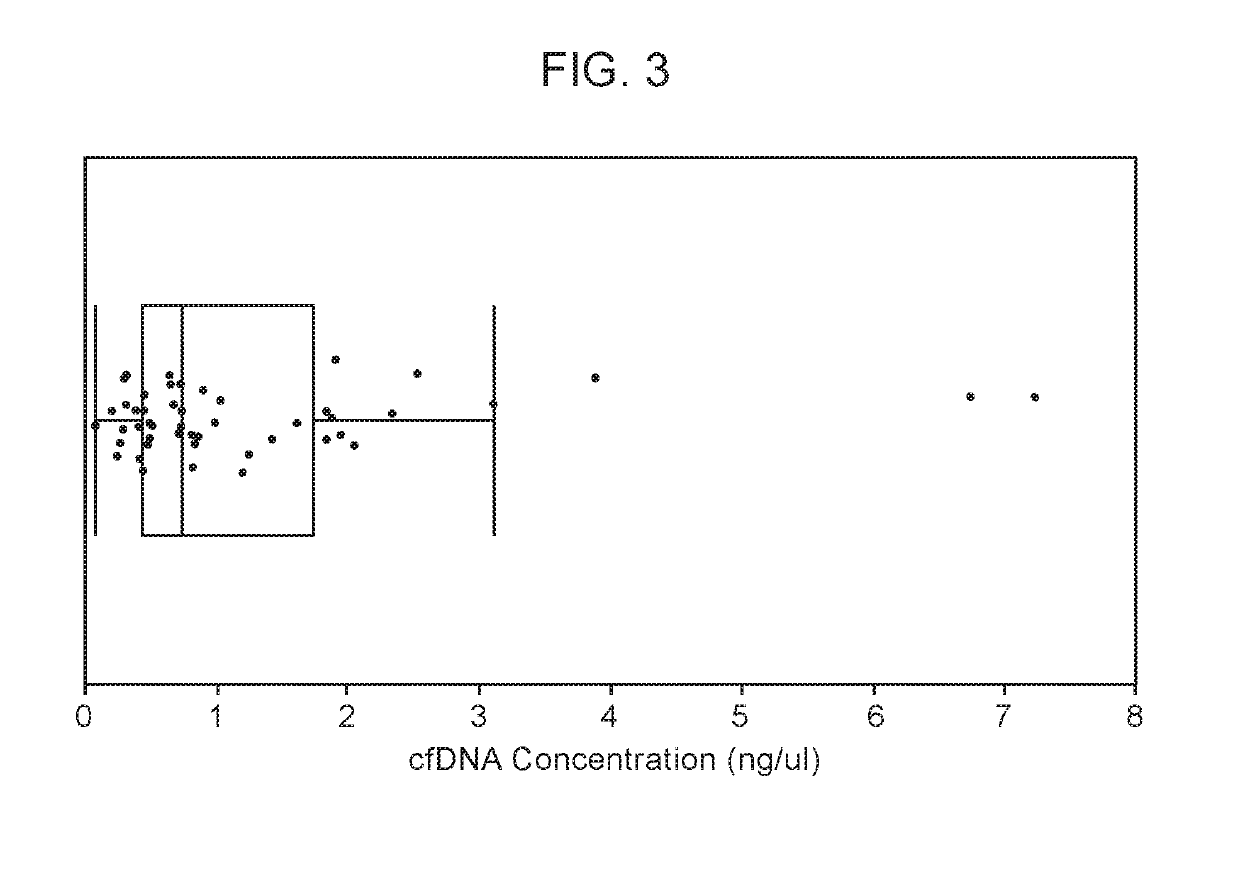Methods for lung cancer detection
a lung cancer and detection method technology, applied in the direction of microbiological testing/measurement, biochemistry apparatus and processes, etc., can solve the problems of high invasiveness of sampling and not without the risk of potentially contributing to metastasis or surgical complications
- Summary
- Abstract
- Description
- Claims
- Application Information
AI Technical Summary
Benefits of technology
Problems solved by technology
Method used
Image
Examples
example 1
of Single Nucleotide Variants (SNVs) in Circulating Tumor DNA (ctDNA) from Lung Cancer Patients
[0156]A prior pilot study demonstrated the successful detection of cancer-relevant point mutations in the plasma of cancer patients. In that study, the mutation profile of 4 lung cancer tumors was determined by whole exome sequencing (WES) or Ampliseq (Life Technologies, Carlsbad, Calif.), and a subset of those mutations were successfully detected in the corresponding plasma samples using a multiplex PCR-Next-Generation Sequencing (mPCR-NGS) method. In this experiment, called TRACERx, the mPCR-NGS method was used to detect and track over time cancer-specific mutations in the plasma of cancer patients, and to evaluate the utility of the method in monitoring disease progression through treatment. The overall project design is shown in FIG. 1. The first phase of the project was the determination of the baseline mutation profile in the plasma of 50 treatment-naïve lung cancer patients. Purifie...
example 2
Multiplex PCR Protocol to Track Tumor Mutations in Plasma
[0216]Natera's bespoke multiplex PCR (mPCR) protocol is designed to estimate plasma ctDNA level by tracking a set of patient-specific mutations identified from tumor tissue sample(s). Given a patient-specific mutation profile we designed custom mPCR panels that can be applied to time-series plasma samples of the corresponding patient.
[0217]SNV targets. The mutation profile, which included single nucleotide variants (SNVs) for each tumor subsection, was determined based on analyses of tumor sequencing. The full mutation profile of each tumor was used to reconstruct the phylogenetic tree of each tumor. PyClone (Roth, et al. (2014). PyClone: Statistical inference of clonal population structure in cancer. Nature Methods 11: 396-398) was used to identify clusters of SNVs, and calculate their cancer-cell fraction. This was used to categorize SNVs as either clonal or subclonal. The driver category of each SNV was determined (1-4, whe...
PUM
| Property | Measurement | Unit |
|---|---|---|
| temperature | aaaaa | aaaaa |
| temperature | aaaaa | aaaaa |
| temperature | aaaaa | aaaaa |
Abstract
Description
Claims
Application Information
 Login to View More
Login to View More - R&D
- Intellectual Property
- Life Sciences
- Materials
- Tech Scout
- Unparalleled Data Quality
- Higher Quality Content
- 60% Fewer Hallucinations
Browse by: Latest US Patents, China's latest patents, Technical Efficacy Thesaurus, Application Domain, Technology Topic, Popular Technical Reports.
© 2025 PatSnap. All rights reserved.Legal|Privacy policy|Modern Slavery Act Transparency Statement|Sitemap|About US| Contact US: help@patsnap.com



